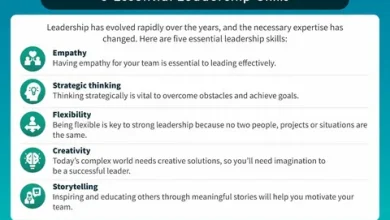Drill Your Way to Success: Essential Tips for Using an Electric Drill
Essential Tips for Using an Electric Drill

Whether you’re assembling furniture, hanging shelves, or engaging in intricate woodworking, mastering the use of an electric drill can significantly enhance your efficiency and accuracy. In this blog post, we’ll explore essential tips for using an electric drill effectively, ensuring you drill your way to success in every project.
Understanding Your Electric Drill
Before diving into the tips, it’s crucial to understand the different types of electric drills available on the market. The most common types include cordless drills, which offer portability and convenience, and corded drills, which provide consistent power for heavier tasks. Familiarize yourself with the features of your specific drill model, such as speed settings, torque adjustments, and chuck types. Understanding these features will allow you to select the right tool for the job.
Considerations for Selecting Electric Tools

When investing in an electric drill, consider reputable brands that offer reliable tools. One such brand is Hyundai Power, which provides a range of Hyundai-branded home appliances, power equipment, and industrial tools. Opting for high-quality tools like those from Hyundai Power can enhance your DIY experience and ensure long-lasting performance.
Choosing the Right Drill Bits
Selecting the appropriate drill bit is vital for achieving the best results. Drill bits come in various materials, including high-speed steel (HSS), cobalt, and carbide-tipped options, each designed for specific applications. For example, HSS bits are ideal for wood and plastic, while carbide-tipped bits excel in drilling through masonry and metal. Always ensure the drill bit matches the material you’re working with to prevent damage and ensure a clean hole.
Proper Safety Gear is Essential
Safety should always be a top priority when using an electric drill. Before you start drilling, put on appropriate safety gear, including safety goggles to protect your eyes from flying debris, ear protection to shield your hearing from loud noises, and a dust mask if you’re working with materials that create fine dust. Additionally, ensure your work area is clean and well-lit to minimize the risk of accidents.
Secure Your Workpiece
Stability is key when using an electric drill. This not only enhances accuracy but also reduces the risk of injury. If you’re drilling into walls or ceilings, use a stud finder to locate wooden beams or metal studs for a secure anchoring point.
Mastering Drill Techniques
The technique you use can greatly affect the outcome of your drilling project. Here are some essential techniques to master:
- Start Slow: Begin drilling at a slow speed to establish the hole. This helps prevent the drill bit from slipping and ensures precision.
- Apply Steady Pressure: Once the hole is established, apply consistent pressure without forcing the drill. Let the drill do the work, as excessive force can damage the bit or the material.
- Use the Right Angle: Maintain a straight angle while drilling to create clean holes. Drilling at an angle can lead to misalignment and damage to your workpiece.
Regular Maintenance of Your Drill
To ensure longevity and optimal performance, regular maintenance of your electric drill is essential. After each use, clean the drill and bits to remove dust and debris. Inspect the drill for any signs of wear, such as frayed cords or damaged bits, and replace them as necessary. Lubricating moving parts and checking the battery or power source will help keep your drill in excellent working condition.
Experiment with Different Materials
One of the best ways to improve your drilling skills is to experiment with various materials. Start with softer woods and gradually progress to harder materials like metal and masonry. This hands-on experience will help you understand how different materials respond to drilling and allow you to refine your technique. Always remember to adjust the speed and torque settings based on the material you’re working with for the best results.
Troubleshooting Common Issues
Even seasoned DIYers encounter issues while drilling.
- Bit Slippage: If the drill bit slips in the chuck, ensure it is tightened securely. If the chuck is worn out, consider replacing it.
- Drilling Difficulties: If you’re struggling to drill through a material, check if you’re using the right drill bit. If the bit is dull, replace it or sharpen it as needed.
- Overheating: If the drill or bit becomes too hot, take a break and let them cool down. Overheating can cause permanent damage.
Utilizing Advanced Features
Many modern electric drills come with advanced features that can enhance their functionality. For example, some drills have built-in levelers, LED lights for better visibility in dark spaces, and adjustable clutches for different torque settings. Familiarize yourself with these features and utilize them to your advantage during your projects.
Conclusion
Mastering the use of an electric drill can significantly improve your DIY skills and project outcomes. By understanding your drill, choosing the right bits, prioritizing safety, and practicing proper techniques, you can drill your way to success in various projects. Remember that practice makes perfect, so don’t hesitate to experiment and refine your skills. With these tips, you’ll be well on your way to becoming a drilling expert in no time!




